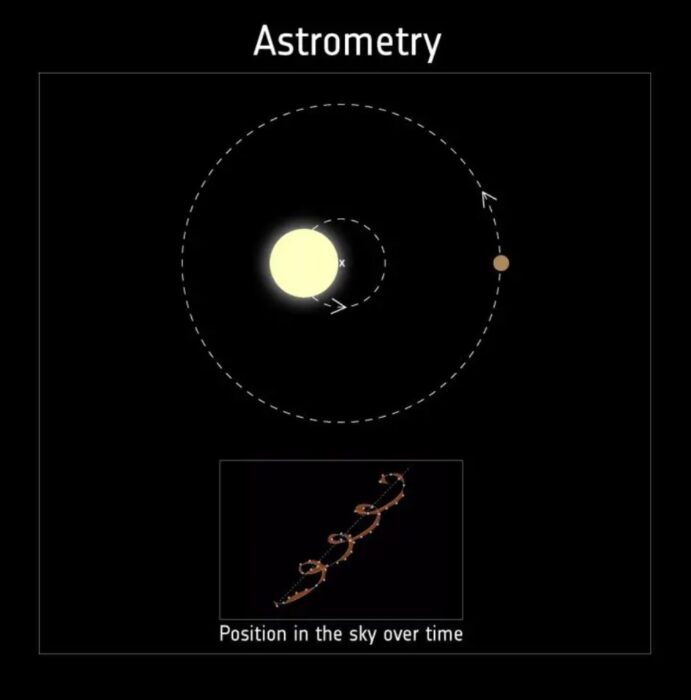Apr 06 2023
New Type of Black Hole Discovered
ESA’s Gaia orbital telescop e has recently discovered two new black holes. This, in itself, is not surprising, as that is Gaia’s mission – to precisely map the three-dimensional position of two billion objects in our galaxy, using three separate instruments. The process is called astrometry, and the goal is to produce a highly accurate map of the galaxy. The two new black holes, Gaia BH1 and Gaia BH2, have two features that make them noteworthy. The first is that these are the two closest blackholes to the Earth every discovered, at 1560 and 3800 light years away (on galactic terms, that’s close). More important, however, is that they represent a new type of black hole.
e has recently discovered two new black holes. This, in itself, is not surprising, as that is Gaia’s mission – to precisely map the three-dimensional position of two billion objects in our galaxy, using three separate instruments. The process is called astrometry, and the goal is to produce a highly accurate map of the galaxy. The two new black holes, Gaia BH1 and Gaia BH2, have two features that make them noteworthy. The first is that these are the two closest blackholes to the Earth every discovered, at 1560 and 3800 light years away (on galactic terms, that’s close). More important, however, is that they represent a new type of black hole.
Black holes are the most massive single objects in the universe. They are made from stellar remnants that have sufficient mass that the inward force of gravity is greater than any outward force of the matter itself. If the stellar remnant is >2.16 solar masses, it will become a black hole. Less than that, down to about 1.4 solar masses, and you have a neutron star. Stars of 20 solar masses or more are large enough to leave a stellar remnant behind after they nova to create a black hole. Black holes can also be formed when two neutron stars collide, the resulting mass being greater than the 2.16 limit. Or, a neutron star can have a close companion and it can gravitationally draw mass from the companion star until it reaches the black hole limit.
There are also supermassive black holes, usually formed at the center of galaxies from gobbling up more and more stars. The most massive discovered so far is 66 billion solar masses.
Despite the name, black holes, at least the ones discovered so far, are not entirely black. The name derives from the fact that black holes have sufficiently intense gravitational fields that light itself cannot escape if it gets too close, a distance referred to as the event horizon. But a feeding black hole, one taking it matter from a companion, gives off a lot of X-rays and radio waves. This comes from the compression and heating of the matter as it swirls into the black hole. In fact, supermassive black holes are among the brightest objects in the universe, known as quasars.
BH1 and BH2, however, are truly black. They are not emitting radio waves or X-rays. We know they exist entirely from the motion of their companion stars. Gaia was able to precisely map the movement of these stars in their orbit around the galaxy. Instead of going in a straight line they may have a looping path, as if they are also in orbit around another massive object. Gaia looked and did not find any luminous object in any frequency near these looping stars. They are orbiting something dark.
The companion stars are giving off a solar wind, as would be expected, but an insignificant amount of this wind is crossing the event horizon of their companion black holes. This must mean that they are in a very far orbit. That is the curious thing for astronomers, because they currently do not have any models for how such a system might form. Given the fact that two such black holes were discovered in the Gaia data, astronomers can also make some statistical calculations and it seems that these types of black holes may be the most common type in the galaxy.
This is all part of Gaia’s survey of binary systems. Gaia so far has catalogued 813,000 binary stellar systems, and these two black holes were discovered in that data. The next data dump from Gaia is likely to have more, as well as more precise measurements (because of longer observation times) of the existing catalogue. When astronomers get the next set of data from Gaia they hope to have more precise estimates of the masses and distance of these new black hole systems. That will help them test new models of how they might have formed.
It is interesting to note that the Gaia binary star survey has given us more information on binary systems than the previous two centuries of astronomy. That’s a powerful statement about the impact of this telescope and the technology we have at our disposal today. Gaia is likely to discover many new things about our galaxy before its mission is done.






